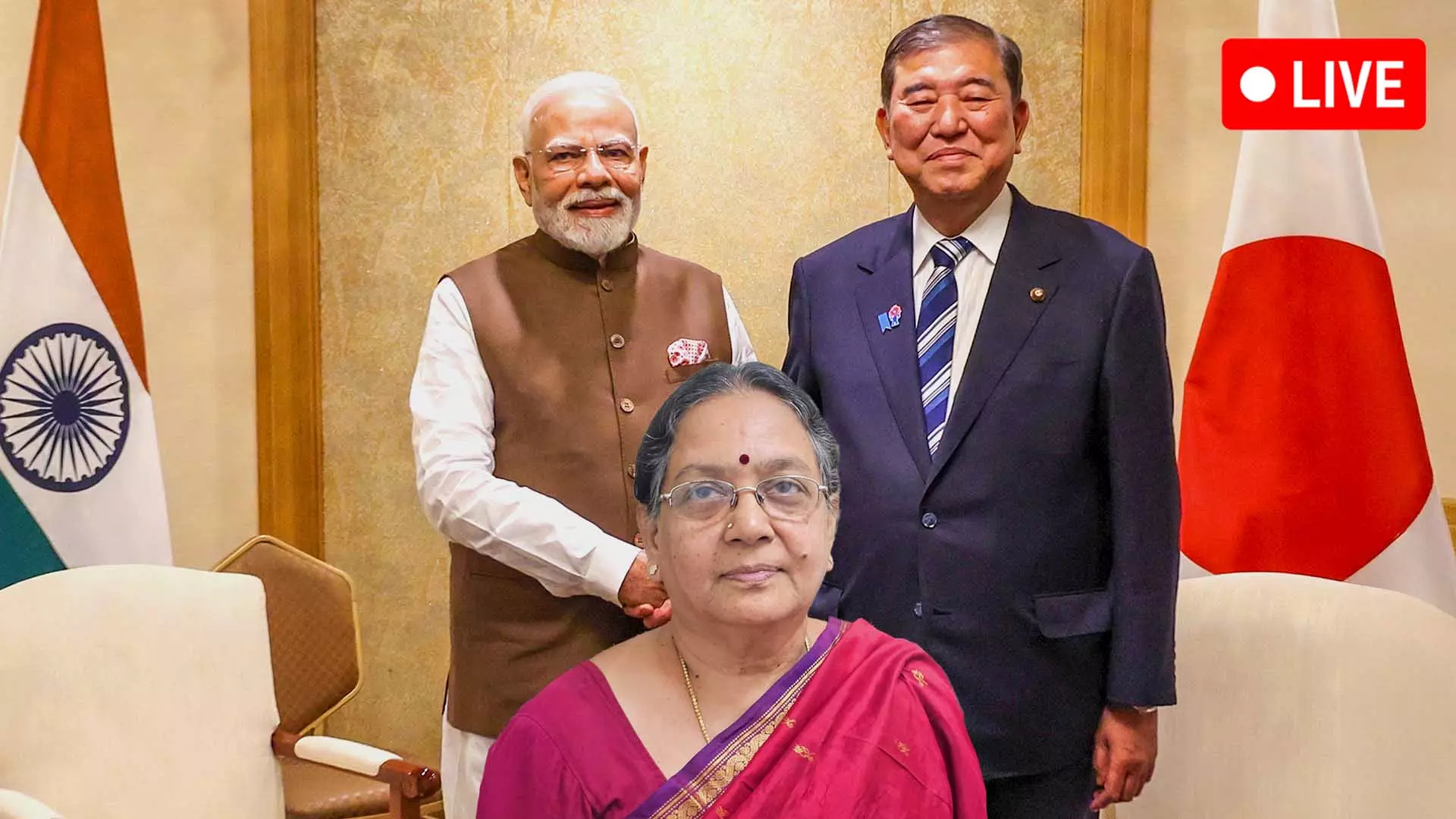
Suguna Ramamoorthy, Secretary General of Indo-Japan Chamber of Commerce and Industry, shares insights on the future of India–Japan economic ties.
Indo-Japan Chamber of Commerce weighs in on Modi’s 10 trillion yen investment target
As Modi unveils a 10 trillion yen goal, will India–Japan ties manage the mix of trade, security, and strategic ambition?

Prime Minister Narendra Modi’s visit to Tokyo for the 15th India-Japan Annual Summit has reinforced the depth of strategic and economic ties between the two nations. From investment targets to cooperation in technology, infrastructure, and security, both countries are looking to shape Asia’s future. In this Capital Beat special, Indo-Japan Chamber of Commerce and Industry Secretary General Suguna Ramamoorthy shares her insights.
Prime Minister Modi announced a target of 10 trillion yen investment from Japan into India over the next decade. How realistic is this target?
I understand from reliable sources that reaching around 5 trillion yen is realistic, possibly by 2026. In the last two years, we have seen strong inflows from Japan and major projects from private agencies.
For example, Suzuki Motors is set to manufacture cars in India for Africa, the Middle East, and Southeast Asia. Nippon Steel is setting up plants in Andhra Pradesh and Gujarat. Toyota Kirloskar is expanding in Karnataka, and another greenfield project is coming up in Maharashtra. JFE Steel is investing about ¥445 billion to strengthen steel production. Sojitz Corporation is investing $395 million to provide clean energy in rural India, with the project expected to be functional by 2027.
When all these projects come together, India will not just be “Make in India” but also “Make for the World.” The vision is clear, and I believe this target is achievable.
Bilateral trade between India and Japan stood at $22.8 billion in 2023-24, with Japanese imports outweighing Indian exports. Modi has pitched India as the “springboard for Japanese business to the Global South.” What structural changes are needed for India to bridge this trade imbalance?
I think the focus should not just be on trade imbalance. When Prime Minister Modi said Japan should use India as a springboard, he meant accessing the larger Global South together.
India’s infrastructure—roads, rail, and ports—is improving rapidly, and we are growing technologically as well. Together, India and Japan can access global markets. It is about partnership to meet global requirements rather than looking only at current trade figures.
From defence dialogues to the 2+2 ministerial meetings, India and Japan have built a strong security framework. Modi reaffirmed his commitment to a free and rules-based Indo-Pacific. Can India-Japan security cooperation act as a credible counterweight in the Indo-Pacific?
The strategic partnership between India and Japan has been progressing steadily. The Quad was formed in 2007, and since then, there has been tremendous activity.
The Indo-Pacific is a vast marine space linking the Indian and Pacific Oceans. Its peace and stability matter not just to India and Japan but also to South Asia, East Asia, Southeast Asia, Australia, Africa, and even parts of America.
Countries in this region will have to cooperate with India and Japan, not just for us but in their own interest. Security cooperation will be vital, and India-Japan leadership in this space is unavoidable.
How do you see the India-Japan bilateral relationship evolving in the near future?
Diplomacy is a slow but steady process. The foundations are strong, going back centuries, with Buddhism playing a role as early as the 6th century. In recent decades, ties have deepened significantly.
In 2000, relations became a Global Partnership, elevated to a Strategic and Global Partnership in 2006, and further enhanced to a Special Strategic and Global Partnership in 2014. Since then, both countries have made remarkable progress in defence, security, technology, and infrastructure.
Projects like the Mumbai–Ahmedabad bullet train reflect this trust. Normally, Japan is cautious about technology transfer, but by 2030, India will operate the same Shinkansen technology that Japan uses. This is the fruit of diplomacy.
Japan is a highly advanced technology nation, and its willingness to share expertise with India is significant. Thanks to strong diplomatic engagement, India is reaping benefits in infrastructure, ODA, and cutting-edge technology. The future looks promising, and I believe India and Japan will continue to play leadership roles in shaping Asia.
The content above has been transcribed from video using a fine-tuned AI model. To ensure accuracy, quality, and editorial integrity, we employ a Human-In-The-Loop (HITL) process. While AI assists in creating the initial draft, our experienced editorial team carefully reviews, edits, and refines the content before publication. At The Federal, we combine the efficiency of AI with the expertise of human editors to deliver reliable and insightful journalism.

